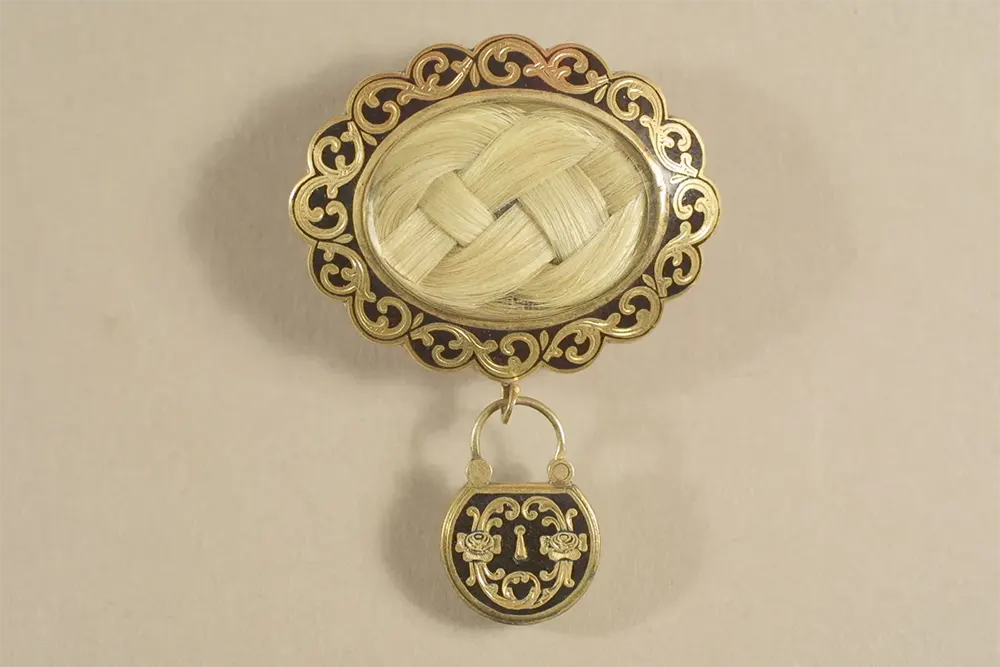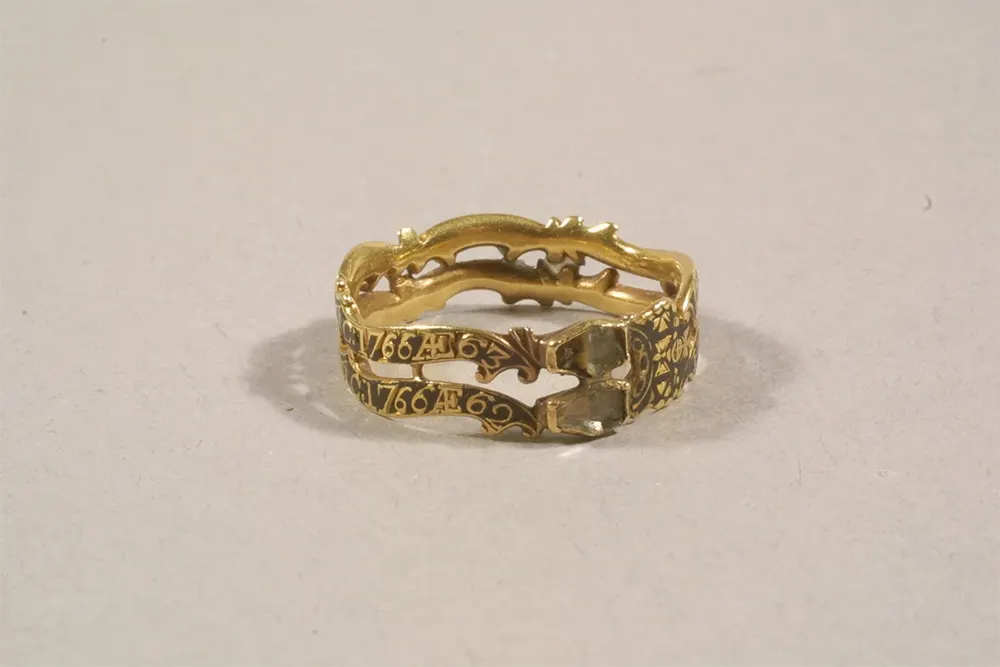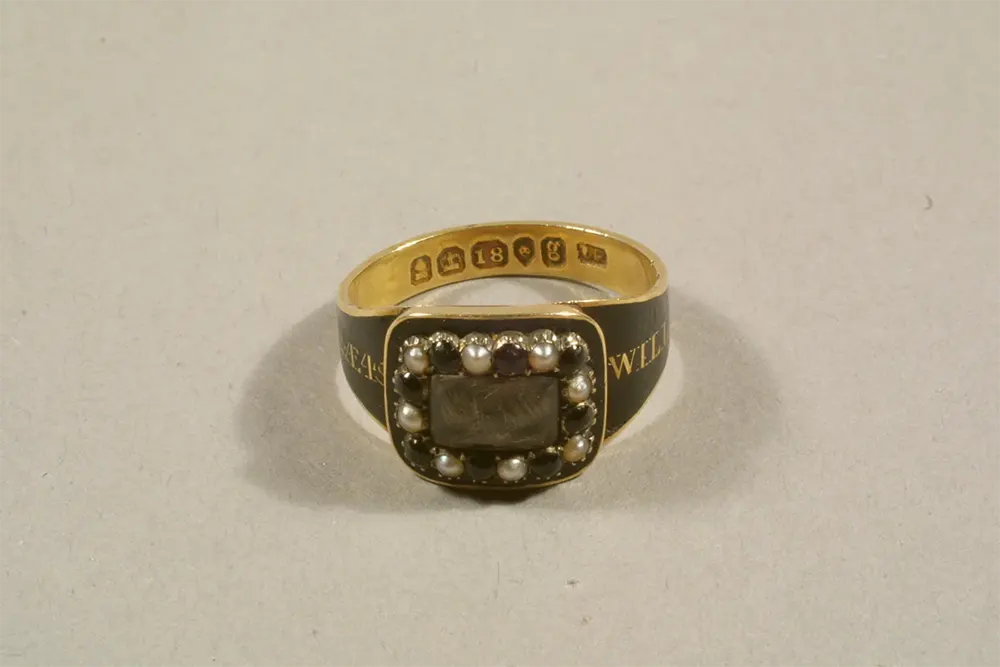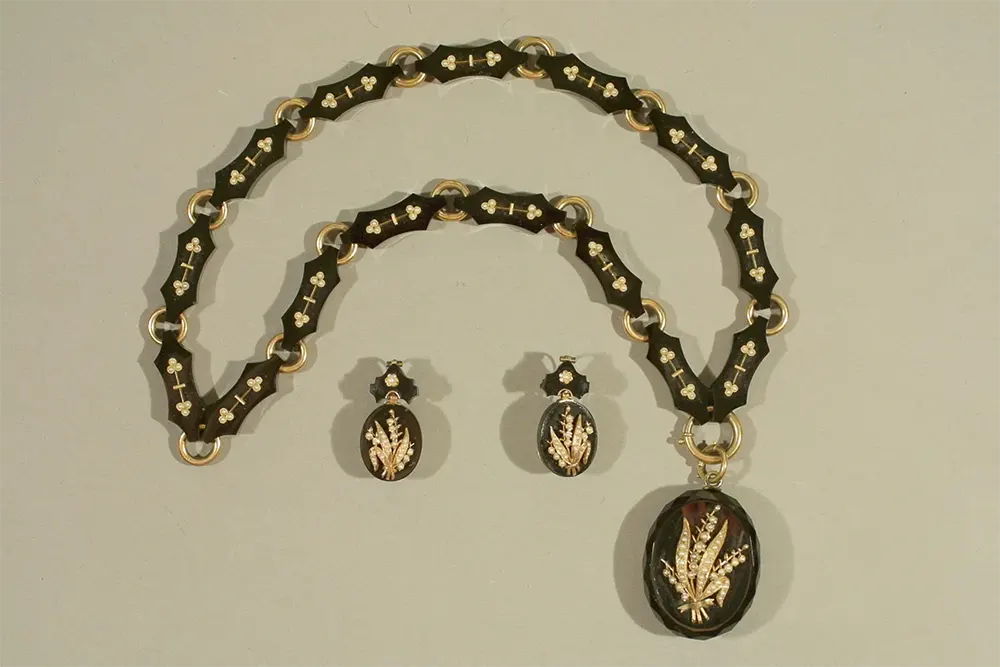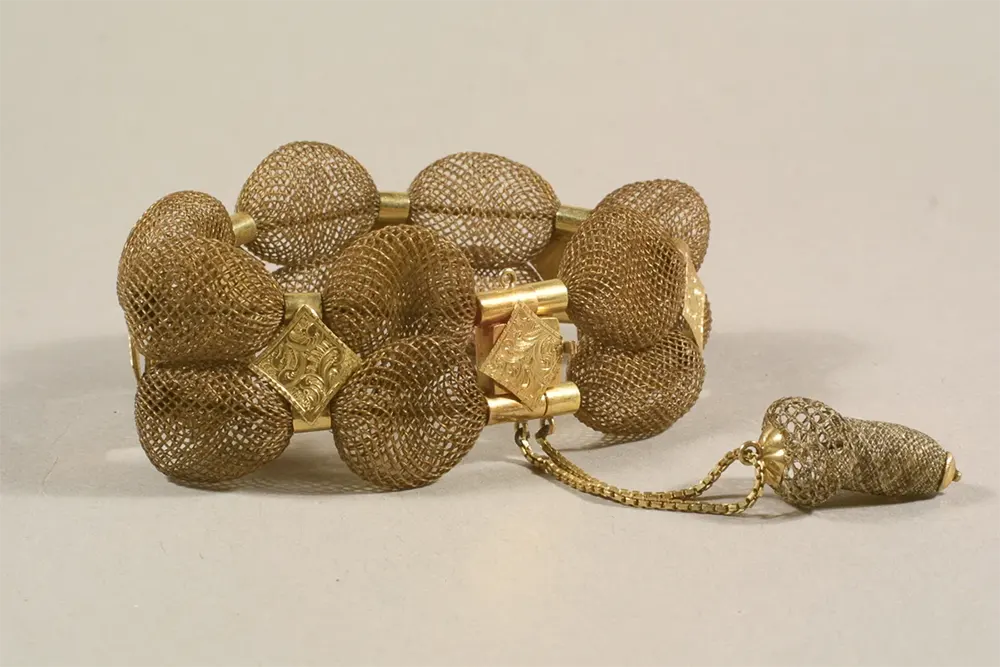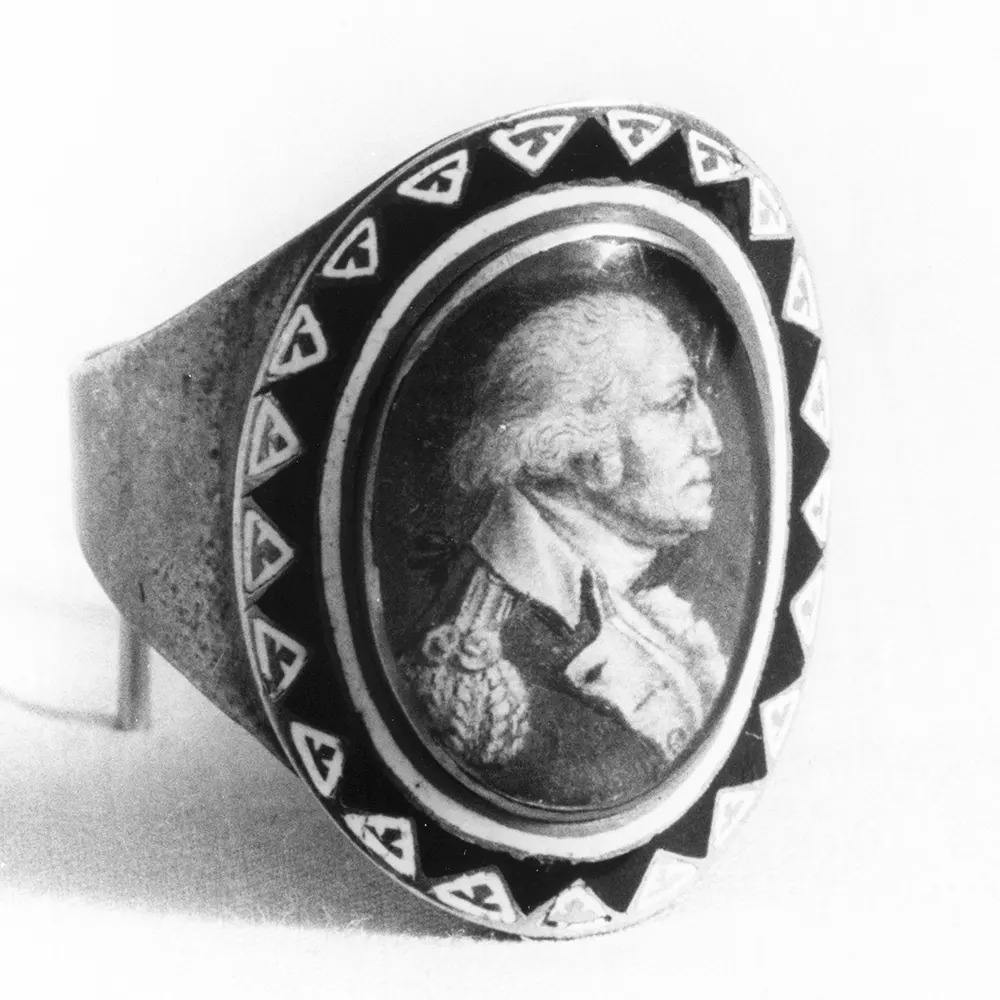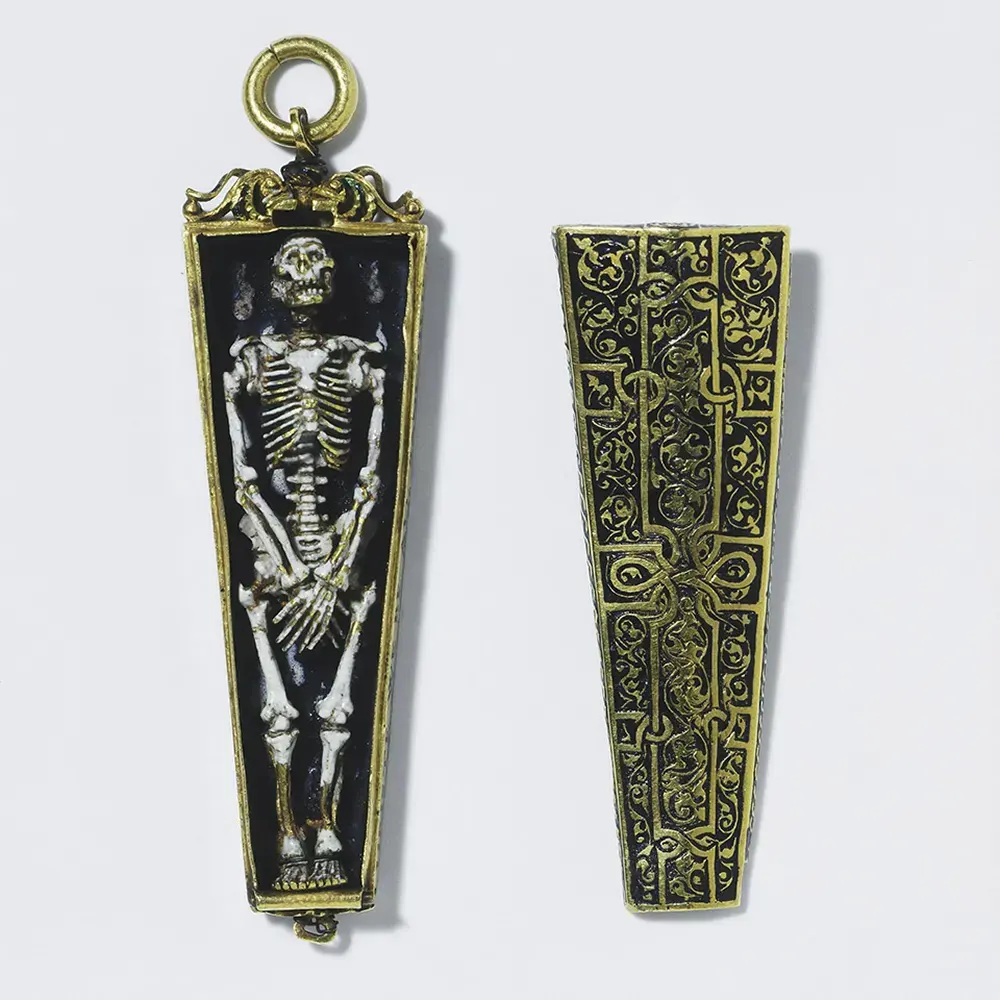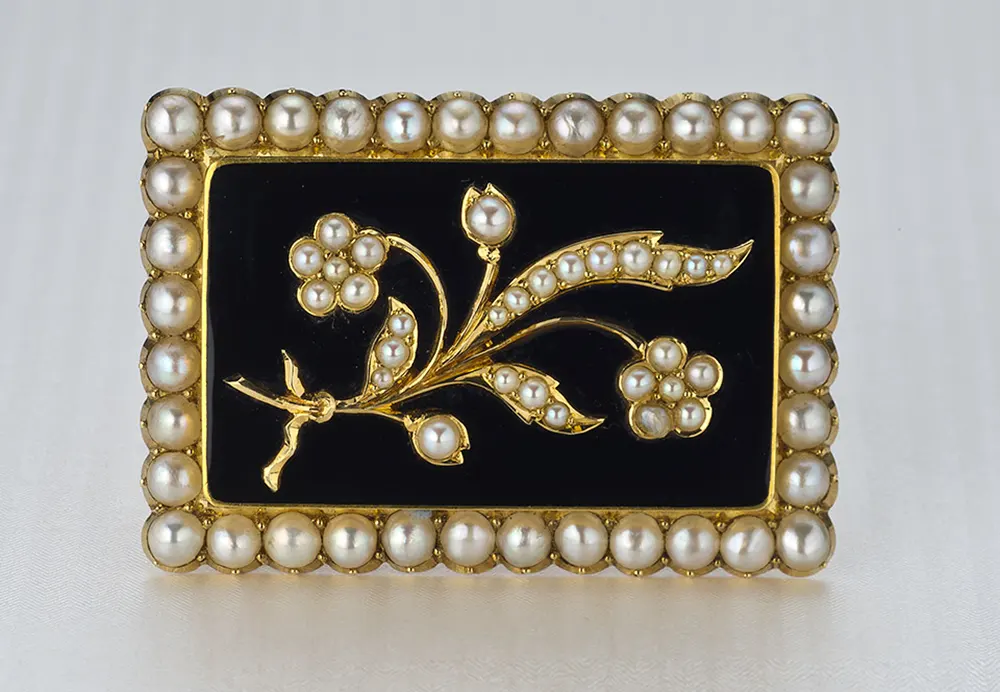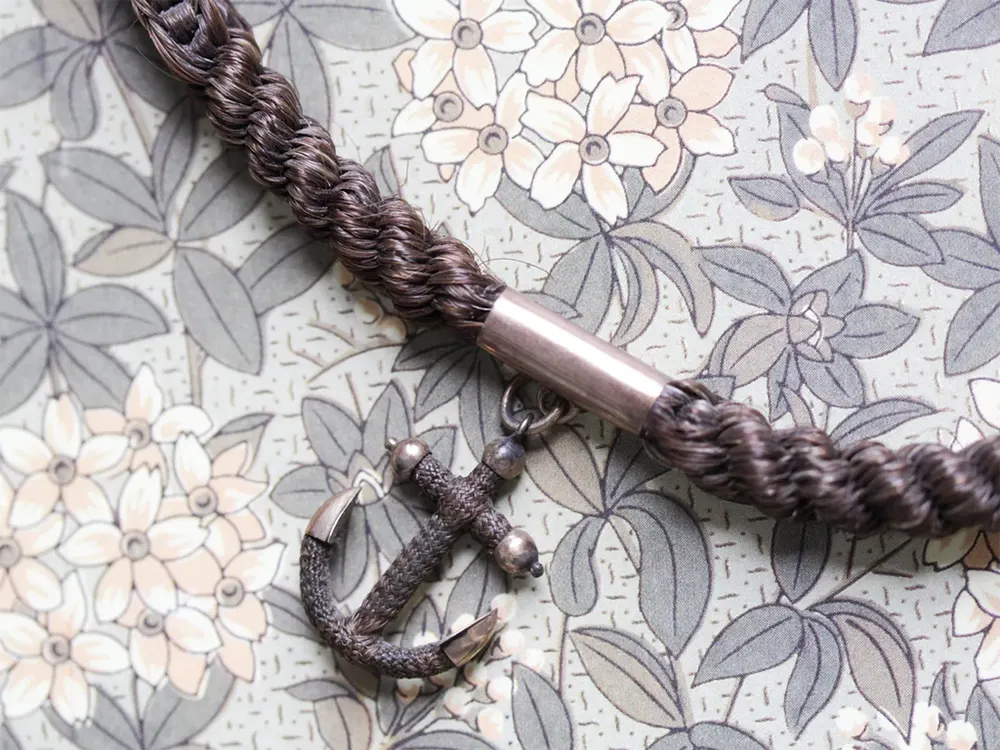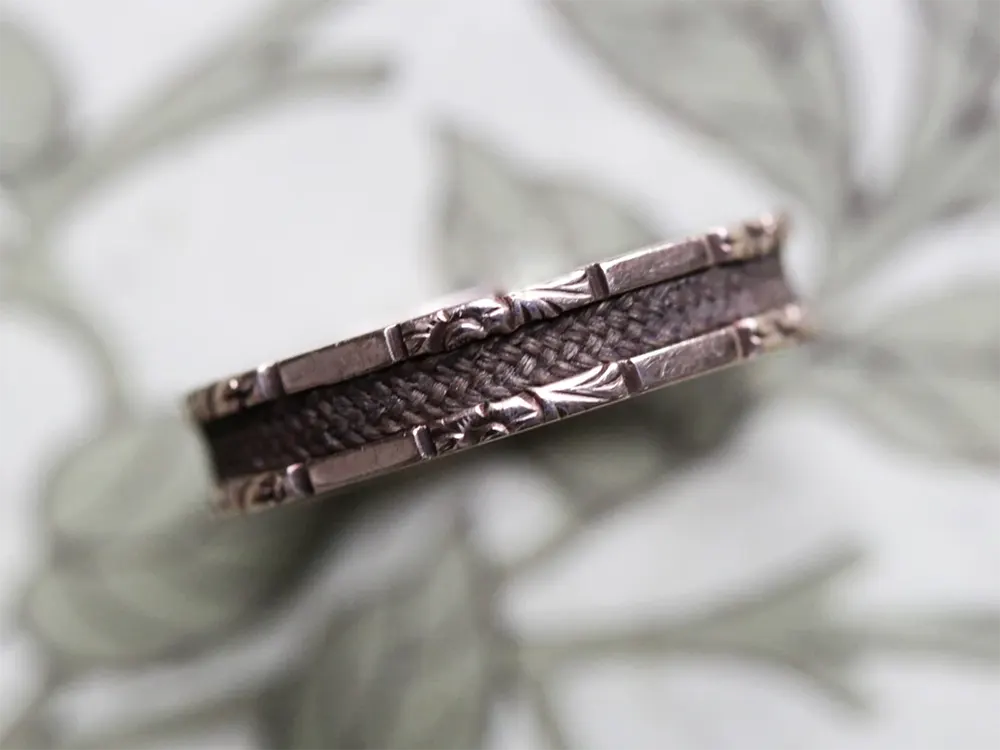Death was a regular occurrence in Victorian times, thanks to pervasive diseases like cholera and scarlet fever. For this reason, the loss of a loved one was not a shocking event, but a sad part of everyday life. The popularity of mourning jewelry reached its peak during the Victorian era (1837-1901). Queen Victoria was deeply in love with her husband, Prince Albert, and when he died in 1861, she fell into a long depression. Queen Victoria spent much of the next four decades wearing black crepe dresses and mourning jewelry. She commissioned portraits, memorials, and busts of Prince Albert and other mementos that were reminders of her deceased spouse. As Queen Victoria set the example for her court and was an admired public figure, wearing mourning jewelry became fashionable. Aristocrats and the wealthy commissioned lockets, bracelets, necklaces, and rings to memorialize their loved ones. Common materials included jet, onyx, pearls, dark tortoiseshell, black enamel, bog oak, vulcanite, and gutta-percha (natural rubber made from the Southeast Asian tree). White enamel represented the death of an unmarried female virgin or a child. Children were sometimes remembered with pearls, which represented tears. Turquoise meant ‘thinking of you’. Richer families set precious stones into the mourning jewelry created for their loved ones. Beyond the usual jewelry materials, mourning jewelry contained some unique things. Hair was used to make everything from exquisitely detailed miniature scenes in jewelry, to braided chains to hold watches and pendants, and even large framed pieces of memorial art. By the mid-1800s, England was importing 50 tons of hair a year to supplement that of the deceased due to the popularity of memorial jewelry and art. A bit rarer to find in Victorian mourning jewelry, teeth also appear in some pieces – particularly rings. This was far less common than hair, and you rarely see these at auctions or antique stores. Some pieces contain scraps of cloth or fabric, likely from the deceased’s clothing. Other designs incorporate tintype portraits or miniature paintings of the deceased. This is common in lockets, where a photo or portrait might occupy one side of the locket and a lock of hair on the other side. Mourning brooches often included a place to keep a lock of hair or a special symbolic design. Mourning jewelry may seem dreary to our modern sensibilities, but understanding the times when it was worn lends a different perspective. The average lifespan during the Victorian era was 40 to 45 years. Europe was in a near constant state of war, and cholera, typhoid, smallpox, and scarlet fever were common killers. Approximately one in three children died before the age of five, and epidemics sometimes brought that number to one in two. Simply put, death was a constant companion in the Victorian era. Mourning jewelry brought a little solace to the survivors who had to cope with frequent losses. (Photo credit: Historic New England / Gemological Institute of America (GIA) / Metropolitan Museum of Art / Wikimedia Commons / Victorian Mourning Jewelry: Unique History By Kate Miller-Wilson / The Antique Jewelry Company). Notify me of new posts by email.
Δ Subscribe
